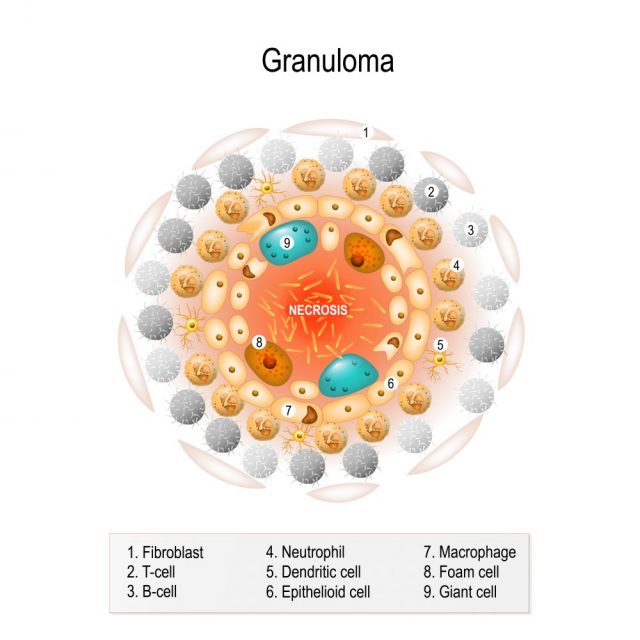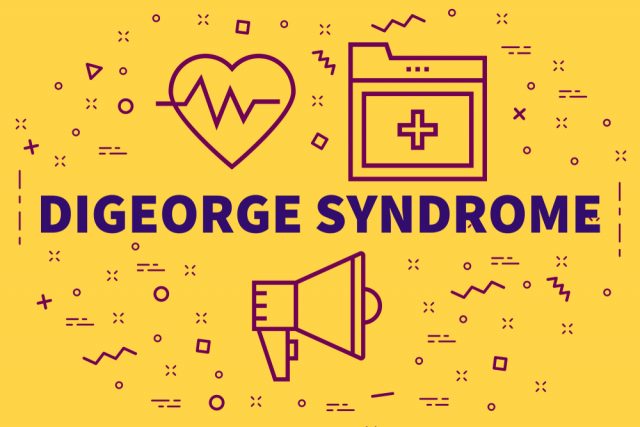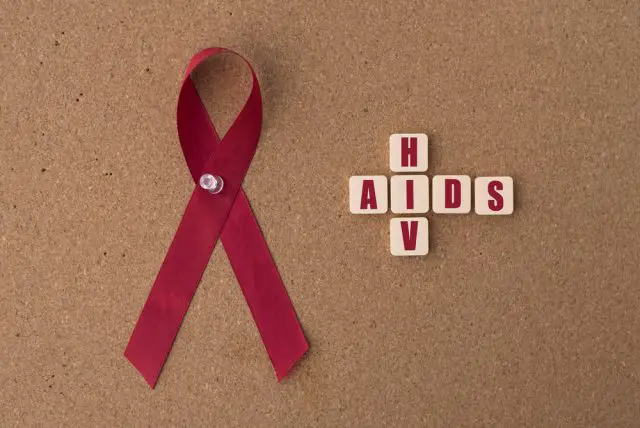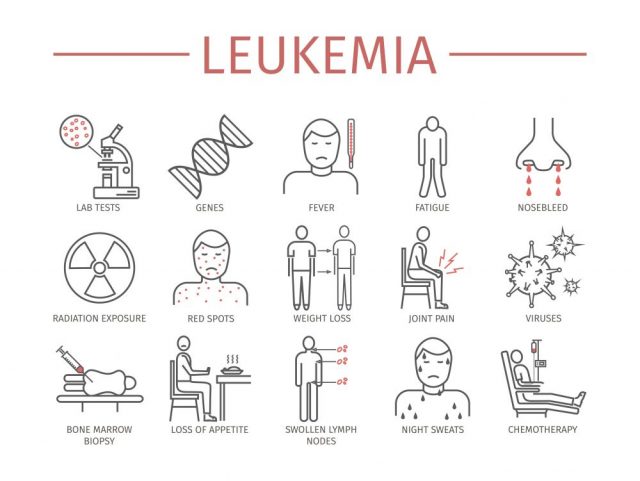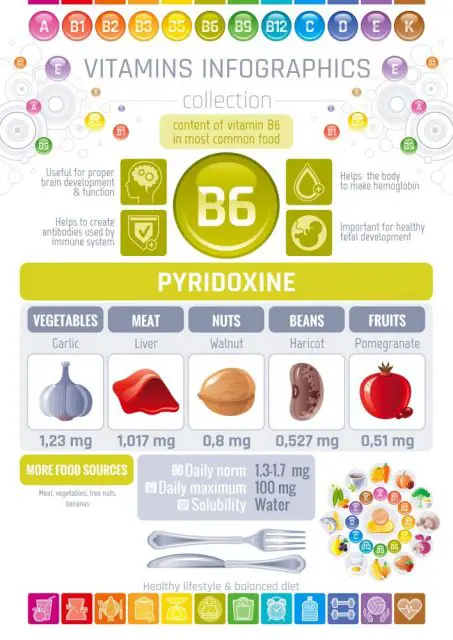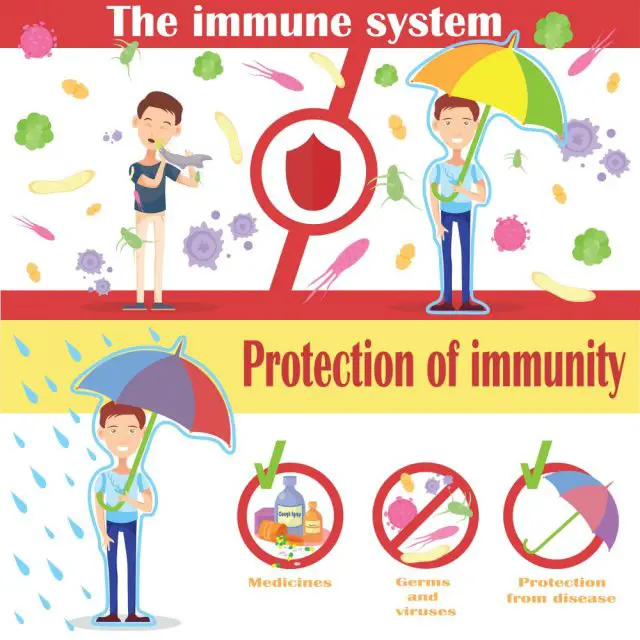Immune System Diseases: Types, Symptoms, Prevention
Introduction
A low immune system is a disorder in which the body stops fighting with viruses and infections, making it easier for the body to become vulnerable to diseases. The low immune system can be caused by 2 ways: the first is the primary or congenital way, where the low immune system is inherited either due to the absence of immune relating organs and cells or the production of abnormal cells, the secondary or the acquired way is when you get it later in life without inheriting it in childhood.
The immune protective organs consist of Spleen, lymph nodes, bone marrow, thymus, and tonsils. The bone marrow produces white blood cells which include the lymphocytes. The lymphocytes, consist of B and T lymphocytes, which are the most important cells that are involved in defending the body against pathogens. The B lymphocyte after production matures in the bone marrow but the T lymphocytes mature in the thymus. B cells function by producing antibodies that fight the invading pathogens and the T cells, also known as the killer cells, destroy the cell as a whole.
On the other hand, an excessive activity of this system leads to diseases that are directed against the body itself, known as the autoimmune diseases. In these diseases, due to inherited genes or genetic mutations caused by exposure to an environmental insult such as harmful radiation, the immune system starts producing excessive lymphocytes that instead of fighting the invading pathogens starts destroying the body itself. Hence, the name of auto or self-immune disease. A very common autoimmune disease include Rheumatoid arthritis, involving the large joints, skin and other systems of the body.
Immune system diseases list
The low or inactive immune system disease can be divided into the congenital (by birth) or primary and the acquired or the secondary diseases. The primary diseases consist of more than a three hundred disorders as recognized by the WHO, a few of which are mentioned below;
- Severe combined immunodeficiency (SCID);
 It is a very rare disease but is of one of the most severe of the low immune disease since it involves a both B cells and the T cells. In this disease, either abnormal white blood cells are produced, or an abnormal function occurs. Children born with this disease, usually die within one year after birth if left untreated.
It is a very rare disease but is of one of the most severe of the low immune disease since it involves a both B cells and the T cells. In this disease, either abnormal white blood cells are produced, or an abnormal function occurs. Children born with this disease, usually die within one year after birth if left untreated. - X-Linked Agammaglobulinemia (XLA);
 In XLA, the B lymphocyte precursors do not mature into adult mature B cells and later into plasma cells. Due to which they are unable to produce antibodies or immunoglobulins to fight against the invading bacteria. Antibodies are responsible for further activating the rest of the immune system as well as destroying the microbes and in their absence, the body is vulnerable to the invading
In XLA, the B lymphocyte precursors do not mature into adult mature B cells and later into plasma cells. Due to which they are unable to produce antibodies or immunoglobulins to fight against the invading bacteria. Antibodies are responsible for further activating the rest of the immune system as well as destroying the microbes and in their absence, the body is vulnerable to the invading - Chronic Granulomatous Disease (CGD);
 CGD is an inherited immune deficiency disease in which the non-lymphocytic white blood cells fail to produce specific chemicals that are responsible for engulfing and destroying the bacteria thereby weakening the immune system. The nonfunctioning, inactive cells clump together to form knots known as Granulomas, which is where their name come from.
CGD is an inherited immune deficiency disease in which the non-lymphocytic white blood cells fail to produce specific chemicals that are responsible for engulfing and destroying the bacteria thereby weakening the immune system. The nonfunctioning, inactive cells clump together to form knots known as Granulomas, which is where their name come from. - DiGeorge syndrome (DGS);
 DiGeorge syndrome consists of a group of similar appearing disorders relating to defects of head and face. It does not present until the child is older and of school going age with the involvement of every system of the body.
DiGeorge syndrome consists of a group of similar appearing disorders relating to defects of head and face. It does not present until the child is older and of school going age with the involvement of every system of the body. - Human immunodeficiency virus infection (HIV) and acquired immune deficiency syndrome (AIDS);
 HIV is a virus that is transmitted through either unprotected sex or through contaminated blood transfusions or needles. This virus primarily affects the immune system and weakens it leading to acquired immune deficiency syndrome (AIDS). As a consequence of a weakened immune system, the body is at the risk of developing diseases that are rare in an individual with a normally functioning immune system, and therefore can equally be
HIV is a virus that is transmitted through either unprotected sex or through contaminated blood transfusions or needles. This virus primarily affects the immune system and weakens it leading to acquired immune deficiency syndrome (AIDS). As a consequence of a weakened immune system, the body is at the risk of developing diseases that are rare in an individual with a normally functioning immune system, and therefore can equally be - An immune system relating cancers such as leukemia and lymphomas;
 Cancer relating to the immune system produce an excess of immature and ineffective immune cells which are unable to defend the body against the invading particles.
Cancer relating to the immune system produce an excess of immature and ineffective immune cells which are unable to defend the body against the invading particles.
Immune system disease symptoms
The most common symptom of a deficient immune system is the tendency to get frequent colds and infections, which is a part of opportunistic infections that an individual is unlikely to get with a normal immune system. These infections include recurrent pneumonia and other respiratory tract infections, ear infections, skin infections or infections of brain and meninges such as meningitis or encephalitis.
The infections and inflammation can be of any organ of the body such as the brain, heart, lungs etc. The disorders of blood are also common such as a tendency to bleed excessively or for excess clot formations or anemia. The involvement of the gastrointestinal tract may lead to symptoms such as nausea, vomiting, diarrhea, loss of appetite and abdominal cramping.
The weakening of immune system may give rise to autoimmune diseases such rheumatoid arthritis, SLE and type 1 Diabetes Mellitus. The symptoms relating to the children include a delay in growth and the development and a decrease in the Intelligent Quotient (IQ) of the children. It also increases the chances of developing cancers such as leukemia and lymphomas and cancers relating to other systems.
Immune system disease prevention
For the prevention of primary or hereditary immunodeficiency diseases, the only possible method is genetic screening done before conceiving in case of a familial disease. Other than that no other possible method of prevention has been found yet. The only other prevention that can be done is to protect the individual from the opportunistic infections by practicing good hygiene practices, eating healthy food and home cooked food, exercising regularly, getting immunizations regularly under the recommendation of a qualified physician and avoiding exposure from infected individuals.
The prevention of the secondary or acquired immunodeficiency disease is through the prevention of the disease up leading to it. In case of chronic diseases such as diabetes, and nephrotic syndrome, the treatment or the control of the disease might limit the degree of immunosuppression or prevent it altogether from occurring.
In case of cancers such as leukemia or lymphoma, treatment with chemotherapy and radiotherapy might stop the progression of the disease, by increasing the number of normal and effective white blood cells and thus, increasing the body immunity. In case of removal or suppression of immune systems, immunoglobulins can be administered parenterally to support the immune system or prophylaxis antibiotics or antiviral drugs can be given.
For the prevention of HIV/AIDS, screening of blood and its products should be done to prevent its parenteral transmission. For transmission through seminal fluids, condoms should be used as a mean for protection against it. If you believe that you have been exposed to HIV/AIDS, you can immediately consult your doctor and take post-exposure prophylaxis for it in case of an emergency. In case of an affected mother, the disease will be transmitted to the baby at the time of birth, and to prevent that the mother is given antiviral therapy so that the disease will not be transmitted to the newborn.
Immune system disease and diagnosis
For the detection of immunodeficiency diseases, the first step of diagnosis is the medical history of the patient. In the medical history, the patient is asked a number of pertinent questions relating to the sign and symptoms of the immunodeficiency disease such as the number of colds the patient had in the past few days or months or if there has been any history of chronic illness in the past few years. The doctors might even ask you about your family history and your sexual history including the questions about your partners or the use of protection.
Next comes your physical examination, from head to toe, including the systems. After the examination, blood test needs to do, which will include the total and differential white blood cell count, B and T lymphocyte counts and the levels of the plasma cells and immunoglobulins or antibodies.
For the detection of genetic and hereditary diseases, analysis of the DNA needs to be done by genome sequencing in the fetus and the newborns in case of a strong family history and in those with the suspicion of late manifestation of an inherited disorder. In case of HIV and AIDS suspicion, after the examination, a number of tests are performed including Enzyme-Linked Immunosorbent Assay (ELISA). If ELISA is positive, the Western Blot is performed, which is a very sensitive test for the detection of AIDS or HIV. The Viral Load can also be measured to check the progression of the disease.
Immune system disease and treatment
For the treatment of both primary genetically immunodeficiency and the secondarily acquired diseases, prevention, early detection, and treatment of the opportunistic infection is the most crucial step. Every episode of a cough, pain, and fever should be taken very seriously as they can prove to be life-threatening. For the prevention of infections, aggressive and swift treatment antibiotics are done and if the patient does not respond then rapid hospitalization is done and intravenous drugs are given.
Some patients with severe forms of immune deficiency take prophylaxis antibiotics and antiviral drugs. They are also vaccinated against microbes by immunizing the individual with the use of dead vaccines and under hospital surveillance in case of a negative reaction. Ibuprofen is giving for the management of fever and pain.
To boost the immune system, Immunoglobulins i.e. preformed antibodies are given to fight against pathogens. It is given through the intravenous route or by giving then under the skin every other week. To protect against the viruses Gamma interferon therapy is given which consist of antiviral drugs to stimulate the immune system.
In the absence of some white blood cells, Growth factors are given, which increase the production of the white blood cells, thus, increasing the immunity. In the severe and life-threatening form of the disease, Bone marrow transplantation is performed in which bone marrow from a donor is implanted in the host.
Conclusion
The immune deficiency diseases weaken the immune system and make the individual susceptible to infections such as a common cold that will not harm a healthy individual but may prove to be life-threatening in an immunocompromised individual. Inherited diseases cannot be prevented without DNA screening and sequencing but the acquired diseases due to secondary infection can be prevented by aggressive monitoring and treatment of the cause.





